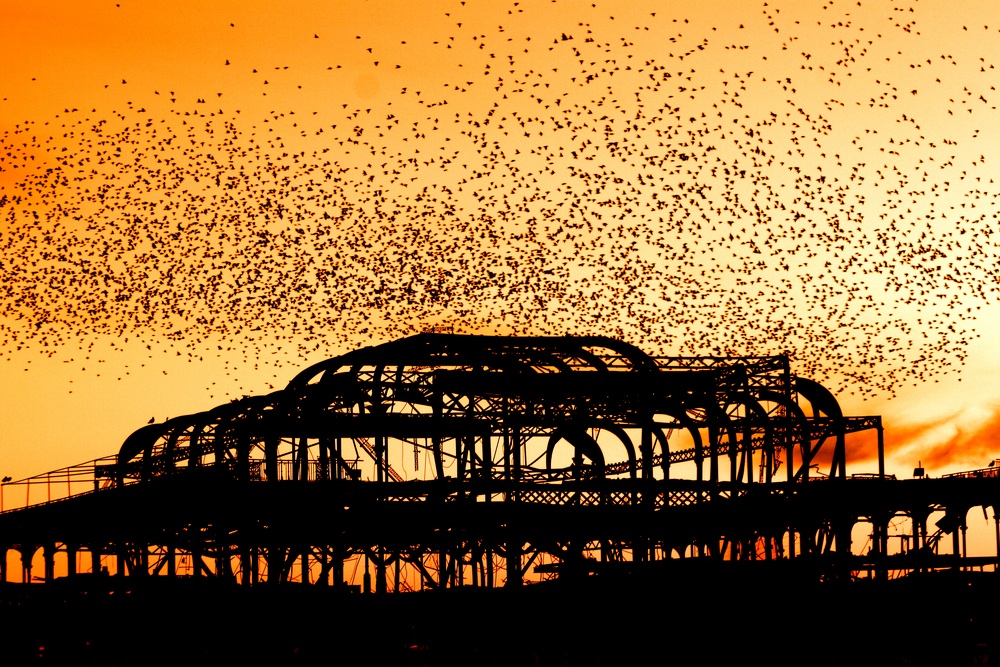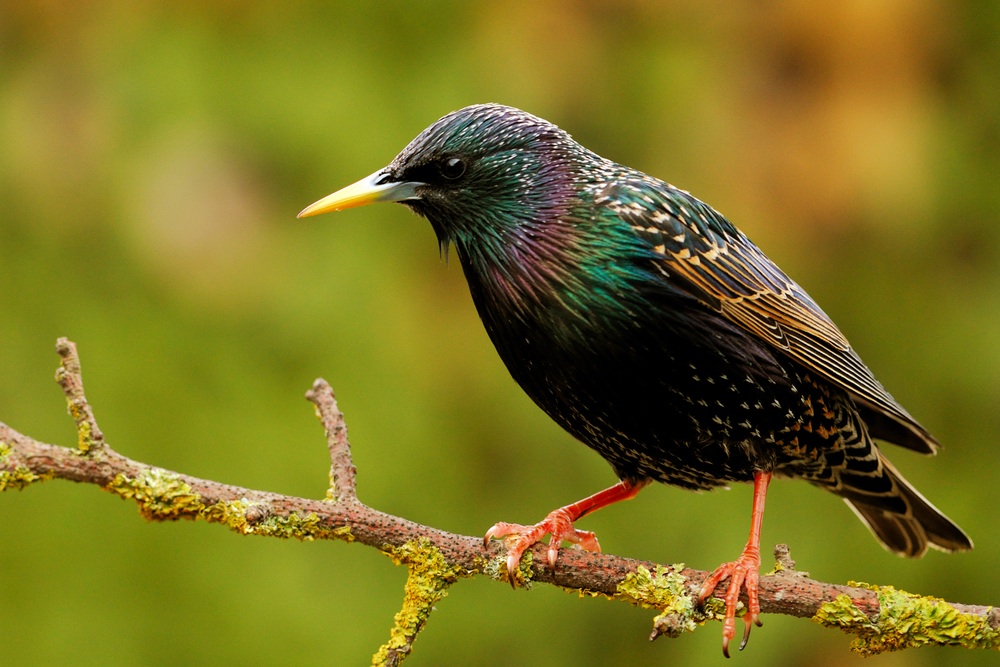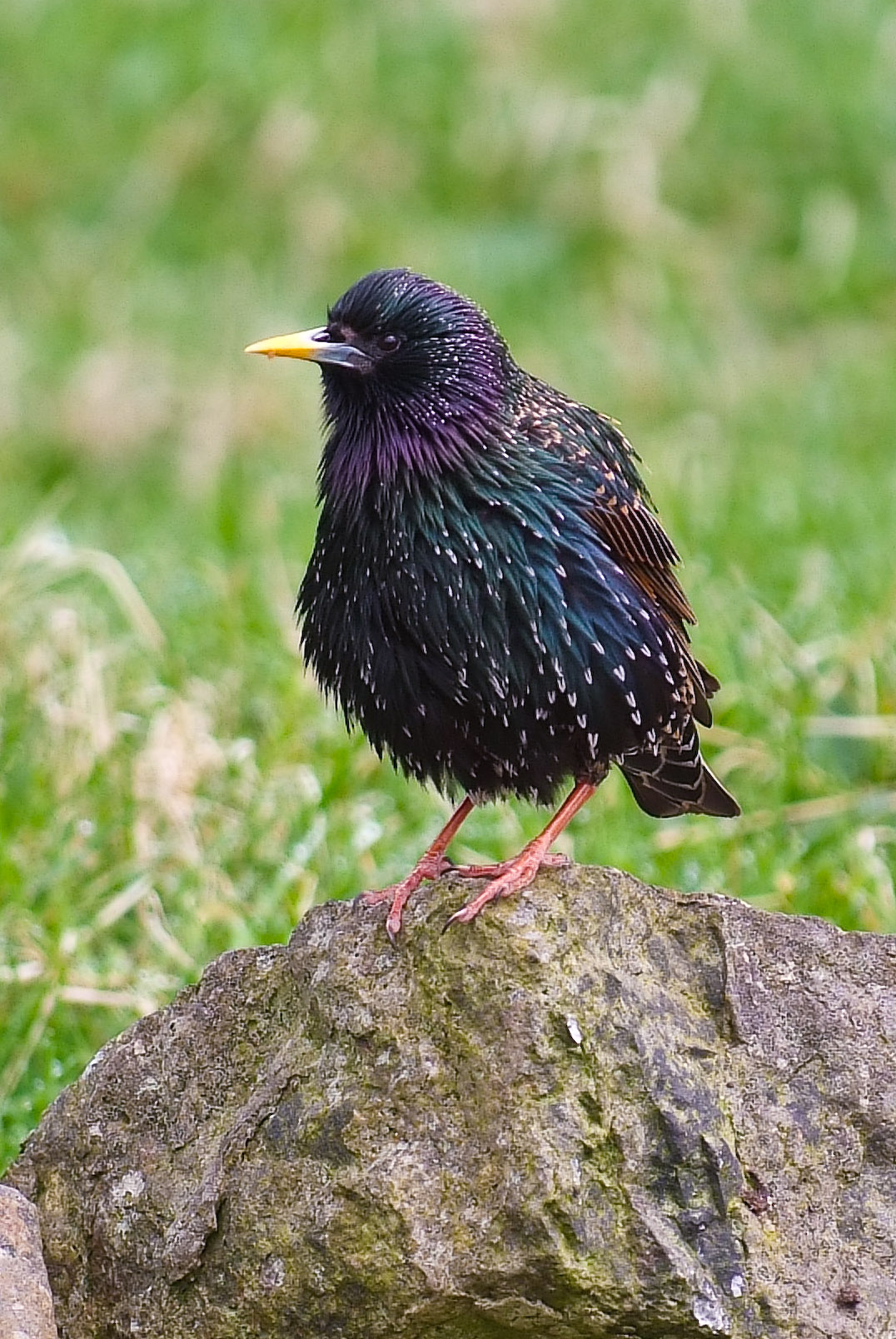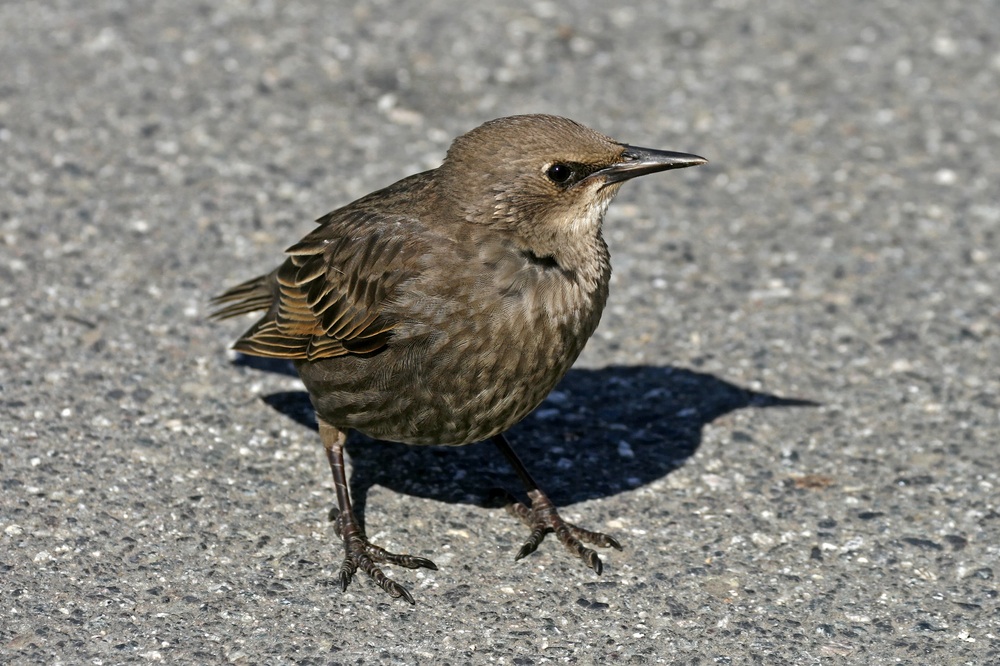The man who loves starlings

There are few birds more adaptable than the common starling. Originally confined to Europe and western Asia, it was taken to North America in the late 1800s and has now spread over much of the continent. It has also been introduced successfully to South Africa, New Zealand and south-eastern parts of Australia too.
Meanwhile, in Britain, the huge flocks of starlings which descend unexpectedly on cities when migrating are considered by many people to be nothing more than an unpleasant nuisance, littering the ground with their droppings and chattering constantly.
But avicultural consultant Roger Caton sees starlings in a different light. “People usually take them for granted,” he told me. “They're such common birds that they hardly merit a second glance. But if they were a rarity, everyone would enthuse about their striking markings and the iridescent sheen in their plumage. This can create colours ranging from green to purple, depending on the light.”
How it began

Roger's fascination with starlings began when as a small boy, he used to climb into the loft of his grandparents' house to watch them nesting there. “Later on, I found a young starling at school that had fallen from its nest and so I took it home to hand rear it,” he recalls. “This bird thrived and turned out to be a wonderful pet. It learnt to whistle tunes and I can still remember being very upset when it died.
“Thirty years later, by which time I had become an experienced aviculturist, my interest in colour variants of British birds took me to Belgium where I met fellow breeders who were just beginning to establish various mutations of the starling in captivity.”
At that time, in the early 1980s, such mutations were quite rare. According to Roger, starlings are regarded as something of a delicacy in some parts of Belgium, and hundreds of thousands were then being caught annually and killed for the table. On occasions, trappers obtained different coloured individuals, and soon realised that these might be worth more alive than dead, so they started to sell them to bird breeders.
v Roger Caton's first coloured starlings were cinnamons and pastels, which he imported from a Dutch breeder. It wasn't long before he acquired others. “Being officially regarded as a pest species, starlings in some areas could then be taken by properly-authorised persons. Pest control personnel who knew of my interest passed strangely-coloured starlings to me, rather than killing them.”
New discoveries

Among the varieties which have cropped up here in Britain are white, pied and opal variants.The opal is Roger's favourite variety. It's silvery-blue in colour, with stunning iridescence. It is also the rarest of the mutations at present.
Eventually, Roger decided to concentrate exclusively on starlings, and disposed of all his other birds to fellow breeders. “I had come to the conclusion that starlings were ideal for expressing colour mutations. Their natural iridescence and patterning really brings out the different colours magnificently,” he adds.
“As I became involved in keeping starlings, so I also became very interested in their behaviour,” says Roger. “A number of the islands off the coast of Scotland are home to starlings which are larger than those seen on the mainland, and I wanted to study these distinctive varieties.”
In 1994, Roger was granted a special licence by the Scottish Environment Office to collect some young starlings from the Shetland Islands, and subsequently, permission was also forthcoming for him to obtain birds from the Faroes (see photo by Arne List). He is now working to build up colonies of these starlings, noting how their behaviour differs from that of the mainland relatives.
Breeding problems
Strangely enough for birds which are so common in the wild, starlings are actually difficult to breed successfully in captivity. The main problem, in Roger Caton's experience, is that the chicks need a lot of soft-bodied insects if they are to survive the first three or four days after hatching. In the wild, these birds are actually beneficial, because the adults will consume huge amounts of invertebrates at this stage.
“I then devised a way of overcoming the problem of building some mobile aviaries with mesh floors that could be moved over the grass, allowing the parent birds to find the right food for their chicks over this crucial period,” says Roger Caton.
Starlings will not thrive in an aviary with a solid concrete floor. “If they can't poke around on the floor, they soon become bored,” explains Roger. “This can cause them to pull their nests apart. Some cock birds may also resort to carrying their eggs from the nest as they are laid, and depositing these, undamaged, on the floor of their aviary.”
Roger has found that starlings generally have a short laying period, from April through to mid-May, although those from the Faroe Islands will breed through into July. “In the wild, they have daylight 24 hours of the day at this stage in the summer,” he explains. “They need to take full advantage of the good weather, because in the winter, the snow there often thaws rapidly, so that the meadows where the starlings feed flood and freeze. In bad years, many of the starlings then die of starvation.”
Food and care

Roger Caton places nest boxes on the trees in his garden to attract wild starlings close to his aviaries. “Starlings are very social birds, and having a group in the garden encourages my birds to breed as well,” he says. “I house my pairs separately, but they can see and hear each other.”
Their basic diet is comprised of pigeon pellets, apples and mealworms, and during the breeding season, the adult birds also receive canary egg food, grated cheese and a soaked puppy food.
The chicks are usually removed from the nest at between 10 and 12 days old, after being rung with special rings to prove they are captive-bred. The timing is critical. If they are left any longer, it is very difficult to persuade the youngsters to gape for food, as they will then only respond to their parents' calls. Roger relies entirely on soaked Eukanuba puppy food for rearing the chicks, which naturally have a much plainer appearance at this age.
The young starlings will start to feed themselves from the age of three weeks onwards. They prove to be very robust birds and rarely fall ill. He has had birds breeding successfully up to 12 years old.
At the present time, Roger's collection includes eleven different colour varieties. He also has a few pet starlings which whistle tunes, mimic various noises and talk as well as their better-known relative, the hill mynah.